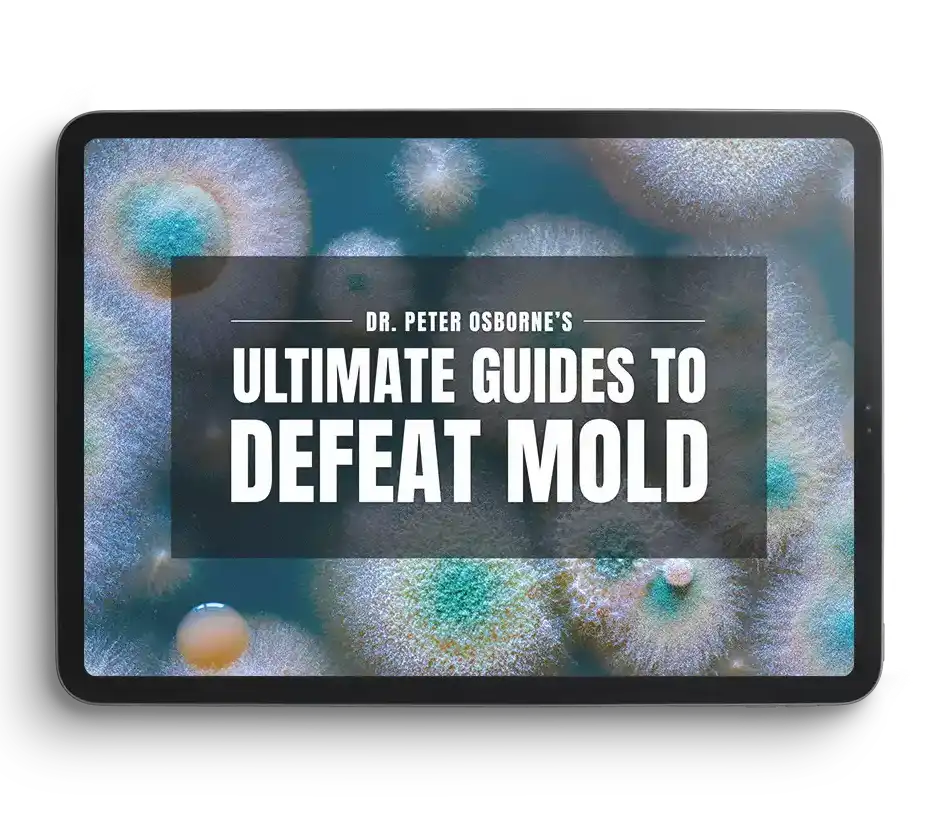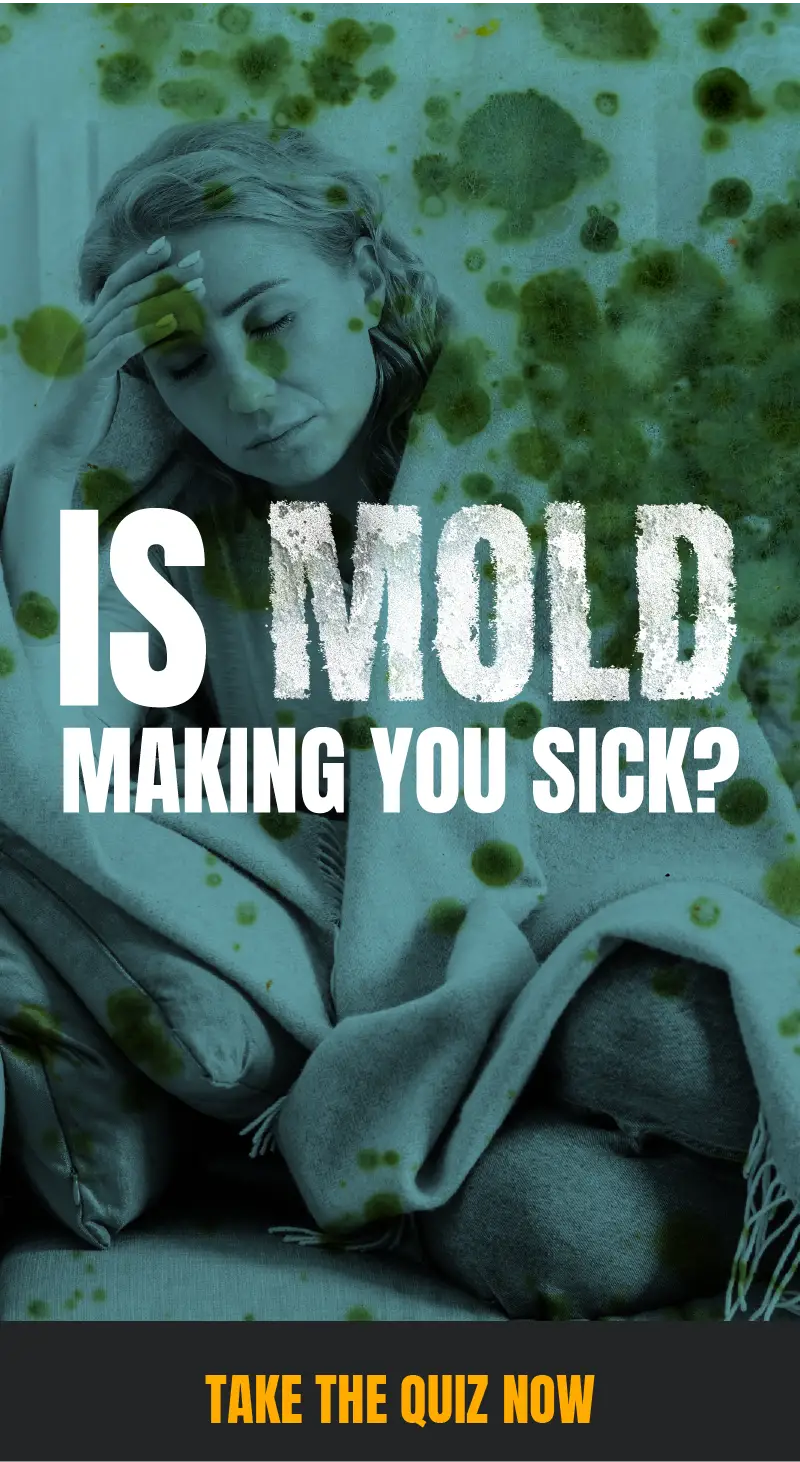In this eye-opening presentation – The Rising Mold Epidemic: Hidden Dangers of Mold & Mycotoxins, Dr. Osborne discusses the rising mold epidemic, warning that it has become a major health threat in the U.S. He explains how symptoms go beyond typical mold allergies, touching on mycotoxicosis, skin rashes, and unexplained fevers. Sharing personal stories from his own experience with mold exposure, Dr. Osborne addresses the challenges of diagnosing these issues, often mistaken for other conditions like viruses or childhood illnesses. He also critiques the limitations of traditional mold testing and emphasizes the need for greater awareness of the dangers posed by mycotoxins, which can contribute to severe health problems like autoimmune diseases and cancer.
The Rising Mold Epidemic: Hidden Dangers of Mold and Mycotoxins
Hidden dangers of mold and mycotoxin related illnesses are a significant and growing health epidemic in the United States. It is often misdiagnosed and mismanaged within the traditional medical system. Unfortunately current infrastructure and building practices contribute to widespread mold contamination, leading to a wide variety of symptoms.
This article discusses the dangers of mycotoxins, the ineffectiveness of simply killing mold, the systemic impact of mold exposure, and the critical need for proper diagnosis, remediation, and lifestyle changes for recovery.
Its personal
Before digging into the details, I want to briefly share why I am so passionate about mold. I have not only supported hundreds of patients through recovery from mold illness, I have personally experienced the detrimental effects of mold in my own life. After months of struggling and misdiagnosis, my wife, my son, and I finally determined the root cause of our declining health. I saw firsthand how much mold can damage your life.
Mold Allergy vs. Mycotoxicosis
You may have heard that only a small percentage (about 5%) of the population has a mold allergy. You might think then that you are unlikely to be affected by mold. However, this is misleading. There is a crucial difference between IgE-mediated allergies to mold spores (causing histamine release and typical allergy symptoms) and mycotoxicosis (a non-allergic inflammatory response to mycotoxins).
Standard skin prick allergy tests are often insufficient for identifying mold-related illness. Instead, a comprehensive assessment of different markers is more accurate. For a comprehensive breakdown on mold testing your body, read this guide.
Many doctors mistakenly dismiss mold as a potential cause of health issues if a patient doesn’t have a classic mold allergy.
The Danger of Mycotoxins
Mycotoxins are molecular byproducts of mold spores. They are the “fumes” that are released by mold itself and act as a secret weapon to destroy other life forms.
Mycotoxins are biological poisons linked to kidney damage, immune suppression, hormone disruption, and cancer. They trigger an inflammatory cascade and can lead to a “repair deficit” where mycotoxins are breaking down the body faster than the body can heal itself.
Systemic Bioavailability of Mycotoxins
Mycotoxins can enter the body through various routes, including air, skin, and the gastrointestinal tract. They are systemically bioavailable no matter the route of exposure, meaning they can travel throughout the body and are incredibly efficient at affecting multiple organs.
This systemic impact explains the wide range of seemingly unrelated symptoms associated with mold illness.
Common Symptoms of Mold-Related Illness
Mold illness is a great mimicker of disease. In other words, mold sickness can mimic so many different illnesses, leading to misdiagnosis and mismanagement with drugs that only treat symptoms. Unfortunately, treating these symptoms rather than the root cause with medications like steroids, NSAIDs, and opiates can further burden the detoxification organs (kidney and liver) and the gut, which can hinder recovery.
Some of the common symptoms of mold related illness include the following:
- skin elasticity changes
- heart palpitations
- low libido
- chronic fatigue
- recurrent upper respiratory/sinus infections (often fungal, not bacterial)
- autoimmune development
- fever of unknown origin
- night sweats
- “pseudo-menopause”
- cherry angiomas
- sleep disturbances
- anxiety and depression
- brain fog
- joint pain
- headaches (especially migraines)
- visual migraines
- nutritional supplement intolerance
- dizziness and vertigo
- tinnitus
- burning or metallic tongue
- loss of smell
- weight gain or loss
- PANS/PANDAS
- skin rashes (including eczema/atopic dermatitis)
- behavioral problems in children (aggression)
For more information about the symptoms of mold toxicity, you can read my comprehensive guide.
The many impacts of mold
Beyond the many symptoms of mold are several underlying disruptions in the body.
- Hormone Disruption:
- Certain mycotoxins, like Zearalenone (Zea), can mimic estrogen, leading to hormonal imbalances and various health issues, including reproductive problems and potentially increased risk of certain cancers.
- Impact on the Immune System:
- Mold and mycotoxins can cause immune suppression, making the body more susceptible to mold colonization (infection).
- They can also trigger autoimmune responses, where the immune system mistakenly attacks the body’s own tissues due to environmental triggers.
- Suppressing the immune system with medications without addressing the underlying mold exposure is counterproductive and can increase the risk of disease.
- Histamine overload
- Mold affects mast cells which contributes to histamine overload.
- Symptoms of histamine intolerance include the following:
- Respiratory
- Runny nose
- Rhinitis
- Nasal congestion
- Dyspnea
- Nervous system
- Headaches/migraines
- dizziness
- Gastrointestinal system
- Bloating
- Flatulence
- Fullness after eating
- Diarrhea
- Abdominal pain
- Constipation
- Nausea
- Vomiting
- Cardiovascular system
- Tachycardia
- Hypotonia
- Collapse
- Reproductive system
- Menstrual cramps
- Skin
- Pruritus
- Flushing
- Urticaria
- Dermatitis
- Swelling
Human studies link mold to nerve and brain damage, skin reactions, autoimmunity mucosal irritations, multiple chemical sensitivities, and cancer.
The Role of Diet in Mold Exposure and Recovery:
Diet plays an essential but often overlooked role in mold exposure and recovery. Failing to include dietary changes in your healing protocol can prevent full recovery.
Grains are identified as the number one source of food-based mycotoxins in the US diet. Following my diet plan in No Grain No Pain is an important piece in mold recovery.
Other common foods that are contaminated with mycotoxins include coffee and peanut butter, as well as dried fruit, nuts, and ultra processed foods. It is estimated that 20-25% of food crops worldwide are contaminated with mycotoxins.
Testing for Mold Exposure:
Mold testing can feel overwhelming, especially as you need to test both your environment and your own body.
Testing You
It is crucial to find a mold-literate doctor who understands mycotoxicosis, not just mold allergy. Recommended tests include the following:
- Urinary mycotoxin testing
- Blood inflammatory markers (TGF-beta-1, C4a, MMP-9, ferritin – note these are non-mold-specific but can be indicative)
- Visual contrast sensitivity (VCS) testing
- Mycotoxin antibodies
- Mold antibodies
- Mold cultures (gut, lung, sinus, etc.)
Proper collection for urine mycotoxin testing is essential. It is important to avoid foods that can contain mold (grains, alcohol, coffee, peanuts, and ultra-processed foods) for at least two weeks prior to your urine sample.
Testing Your Environment
Thorough mold inspection is critical. Air tests are not reliable and will not give accurate results. Consider testing companies with proper equipment like fiber optic cameras, infrared, and humidity readers. Inspectors should also have construction knowledge to properly identify potential mold sources.
Typically, the companies that test mold are not the companies that remediate. It is also important to find a company that is experienced at safe and effective mold remediation. To remediate mold in your environment, you must remove it. Mold cannot be cleaned, and attempting to kill mold with chemicals can worsen the problem by releasing more mycotoxins. Successful remediation requires physical removal and attention to fine particles that carry mycotoxins.
Recovering from Mold
The Necessity of Leaving the Moldy Environment:
You cannot heal in the same environment that made you sick. No amount of detoxification, binders, or supplements will override ongoing exposure. As long as you remain in a mold-contaminated space, your body will continue to struggle against the toxic load, preventing true recovery.
The foundation of healing is removal from exposure. Only then can your body begin the process of detoxification and repair. While treatments can support recovery, they are ineffective if mold exposure persists – like trying to bail water from a sinking ship without fixing the leak.
Leaving the moldy environment isn’t just a step in the process; it is the non-negotiable first step to reclaiming your health. If you are looking to move, make sure you check out my comprehensive guide on how to avoid buying or renting a moldy home. If you are remediating your home, check out my guide on mold proofing.
Supportive Therapies for Recovery (After Leaving or Remediating Mold):
Nutrients that act as binders and as bio transformers are important for detoxification. Binders include things like activated charcoal, zeolite, and fulvic acid. Some supplements combine these binders. Bio transformers include things like glutathione, NAC, vitamin C, and alpha-lipoic acid. Probiotics, particularly spore-based probiotics, can help restore gut health. For a deep dive on mold detoxification and recovery, check out my comprehensive guide.
The Psychological Toll of Mold Illness
Mold illness extends far beyond physical symptoms. It deeply affects mental and emotional well-being, often leaving individuals feeling broken, inadequate, frustrated, and hopeless. The chronic nature of the illness, combined with the difficulty of obtaining a diagnosis and the skepticism of mainstream medicine, can lead to profound despair. In severe cases, individuals may even experience suicidal ideation, feeling trapped in a cycle of illness with no clear path to recovery.
Certain populations, such as women and children, may be more vulnerable to the psychological effects of mold illness. Factors like estrogen’s influence on immune and inflammatory responses, differences in physical resilience, and the amount of time spent indoors – particularly in schools and homes with poor air quality can heighten susceptibility.
Mold illness also has a lasting psychological imprint, resembling post-traumatic stress disorder (PTSD). Once you’ve been affected, hypervigilance sets in: you are constantly scanning for mold, smelling for it, thinking about exposure risks. What was once an afterthought – entering a new building, staying in a hotel, or even visiting a friend’s home can become a source of intense anxiety. The fear of relapse looms large, and many sufferers develop avoidance behaviors that can strain relationships, limit social interactions, and contribute to isolation.
This psychological burden is rarely acknowledged in conventional medicine, yet it is critical to recovery. Addressing both the emotional and physiological impact of mold illness is essential for true healing. Therapy, mindfulness practices, nervous system regulation, and a strong support system can help mitigate the lasting psychological effects and rebuild a sense of safety in the world.
The Bottom Line
The hidden dangers of mold and mycotoxin related illness is one of the largest health threats in the United States, but its impact is not widely understood by most people.
It is important to raise public awareness about mold-related illness. Stay tuned for the documentary film “Mold Jacked“. It was produced to educate and empower the public to protect themselves against the harmful effects of mold and mycotoxins. Greater awareness is crucial to healing our bodies and seeking out healthier homes. .

